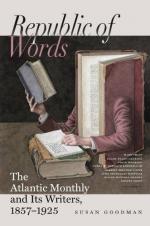After my return from this excursion, I resolved to make a search amongst the records at Annapolis, to ascertain whether any memorials existed which might furnish further information in regard to the events to which I had now got a clue. And here comes in a morsel of official history which will excuse a short digression.
The Legislature had, about this time, directed the Executive to cause a search through the government buildings, with a view to the discovery of old state papers and manuscripts, which, having been consigned, time out of mind, to neglect and oblivion, were known only as heaps of promiscuous lumber, strewed over the floors of damp cellars and unfrequented garrets. The careless and unappreciative spirit of the proper guardians of our archives in past years had suffered many precious folios and separate papers to be disposed of as mere rubbish; and the not less culpable and incurious indolence of their successors, in our own times, had treated them with equal indifference. The attention of the Legislature was awakened to the importance of this investigation by Mr. David Ridgely, the State Librarian, and he was appointed by the Executive to undertake the labor. Never did beagle pursue the chase with more steady foot than did this eager and laudable champion of the ancient fame of the State his chosen duty. He rummaged old cuddies, closets, vaults, and cocklofts, and pried into every recess of the Chancery, the Land Office, the Committee-Rooms, and the Council-Chamber, searching up-stairs and down-stairs, wherever a truant paper was supposed to lurk. Groping with lantern in hand and body bent, he made his way through narrow passages, startling the rats from their fastnesses, where they had been intrenched for half a century, and breaking down the thick drapery—the Gobelin tapestry I might call it—woven by successive families of spiders from the days of the last Lord Proprietary. The very dust which was kicked up in Annapolis, as the old newspapers tell us, at the passage of the Stamp Act, was once more set in motion by the foot of this resolute and unwearied invader, and everywhere something was found to reward the toil of the search. But the most valuable discoveries were made in the old Treasury,—made, alas! too late for the full fruition of the Librarian’s labor. The Treasury, one of the most venerable structures in the State, is that lowly and quaint little edifice of brick which the visitor never fails to notice within the inclosure of the State-House grounds. It was originally designed for the accommodation of the Governor and his Council, and for the sessions of the Upper House of the Provincial Legislature; the Burgesses, at that time, holding their meetings in the old State House, which occupied the site of the present more imposing and capacious building: this latter having been erected about the year 1772.




